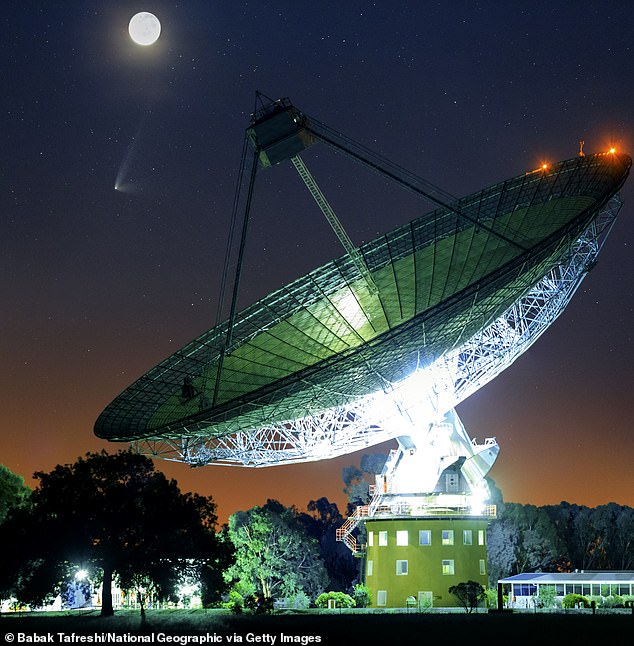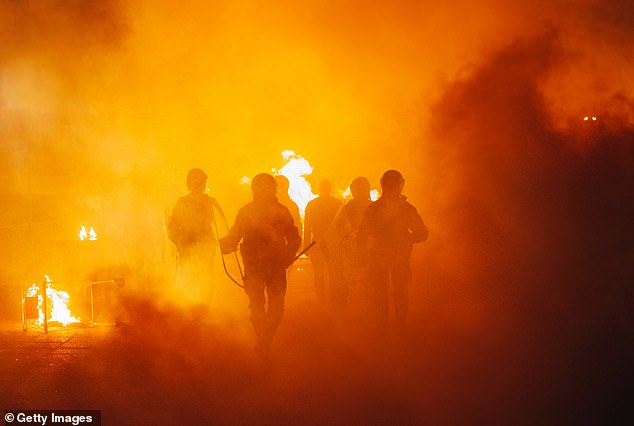What would happen day by day if aliens made contact with earth, according to ex-NASA expert
It’s a moment that’s been depicted countless times in science fiction — but what would actually happen when extraterrestrials make contact via a signal picked up on Earth?
The moment could come as early as the end of this decade: if aliens receive signals sent by NASA’s Deep Space Network (DSN) to the Pioneer 10 satellite in the 70s, for example.
When the moment comes, the signal is most likely to be received by large ground-based telescopes such as FAST in China, the Very Large Array (VLA) in New Mexico and the Parkes Telescope in Australia, says former NASA expert Sylvester Kaczmarek.
Day One
There is no universally agreed rule on how scientists or governments would respond – or on questions such as whether aliens would have rights.
But extraterrestrial-focused organisations including the Search for Extraterrestrial Intelligence (SETI) drew up a framework in 2010.
Rather than immediately announce the finding to the world, scientists would work to confirm it was real – first ruling out interference from earth such as satellites and radio transmissions.
A mysterious signal at the Parkes Radio Telescope in the 90s was discovered to be a microwave oven in the staff canteen.
Kaczmarek says: ‘For a signal to be considered potentially extraterrestrial, researchers would typically require multiple layers of confirmation and analysis, often over several weeks or months.

‘The signal would need to demonstrate properties inconsistent with natural astrophysical sources and human-made interference.’
In SETI’s ‘Declaration of Principles Concerning the Conduct of the Search for Extraterrestrial Intelligence’, published in 2010 with the International Academy of Astronautics (IAA), the guidelines suggest discoverers should collaborate with other institutions to be sure the signal is real.
Nothing would be announced until confirmed, although the scientists would respond to media queries if news ‘leaked’.
Week One (after confirmation)
Scientists at the observatory would notify organizations such as the International Academy of Astronautics (IAA) and the International Telecommunication Union (ITU).
Kaczmarek says that while organizations such as SETI have their own strategies for first contact in the event of sudden contact, organizations with expertise in space communication like NASA, and the ESA would almost certainly get involved.


Kaczmarek says: ‘Governments would also become quickly involved, particularly those with advanced space programs or defense capabilities, like the US Space Force or equivalent agencies.
‘However, in such a scenario, there would likely be confusion and competing interests before a unified global strategy emerged.’
Once scientists are certain, the discovery would be shared – probably through a public announcement including a press release and scientific publication, Kaczmarek says,
Kaczmarek says: ‘This transparency could be delayed depending on geopolitical or security concerns, especially if governments or defense agencies got involved.’
But once the secret is out, it’s bound to leak so governments will likely try get ahead of the panic and confusion that would ensue.
Week Two
One of the first things would happen would be to ‘protect’ the frequency the signal was received on to ensure more signals could be received.

Scientists would use emergency procedures within the World Administrative Radio Council of the International Telecommunication Union.
SETI’s guidelines suggest establishing a Post-Detection Study Group to analyze the signal and start discussions of how to respond.
At this point, it’s likely that the United Nations would become involved in deciphering the signal and working out how to respond.
Kaczmarek says, ‘In principle, the United Nations would play a central role in any coordinated global response.

‘The UN Office for Outer Space Affairs (UNOOSA) is the most likely body to lead, as it oversees the peaceful use of outer space and has existing treaties, like the Outer Space Treaty of 1967, that cover international cooperation in space.’
Scientists and governments would work together at this point to understand where the signal came from, what it means – and whether or not to respond.
Week Three
The response to alien contact would vary according to what form it took: a visit from a spacecraft would require a direct response, says Kaczmarek.
But a signal received from the depths of space would require ‘long-term planning’ to respond to.
It’s likely that responding to such a signal would be a global decision, according to the Declaration of Principles Concerning the Conduct of the Search for Extraterrestrial Intelligence.
Rather than the scientists or any one group formulating a response, the scientists would seek guidance from global groups such as the United Nations.
The document says, “In the case of the confirmed detection of a signal, signatories to this declaration will not respond without first seeking guidance and consent of a broadly representative international body, such as the United Nations.”


